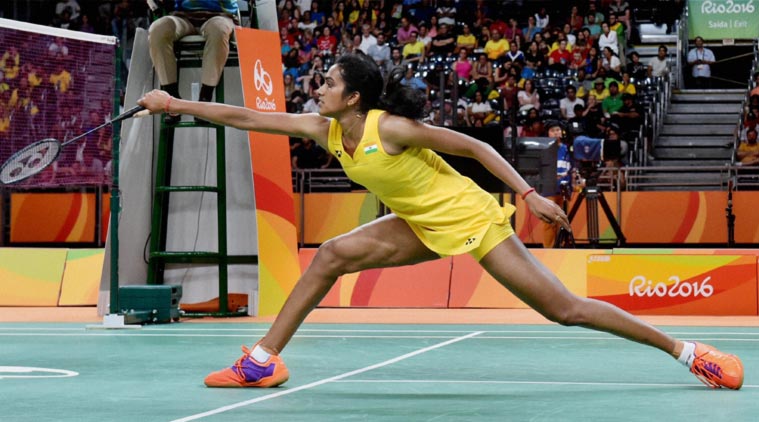
It’s new-age India’s new genes that are finally pushing the country towards a medal at the 2016 Olympics. Pusarla Venkata Sindhu, regally rangy at 179 cm (5’10.5”), born to tall, athletic parents from Hyderabad, is spreading her wings — or wingspan — marching towards a medal after she beat Taiwan’s Tai Tzu Ying and Chinese Yihan Wang in successive straight-set matches.
Next, she runs into Nozomi Okuhara (barely 5 feet, but tremendously consistent and intrepid), and is expected to use her vertical advantage to bring down the Japanese and assure herself at least a silver medal in Rio.
In the process, she has denied China, a country in constant, obsessive search of tall shuttlers to replace the old bunch, a chance at two medals for the first time since 1996.
It’s for the first time in 20 years that China will not occupy two spots on the medals podium at the Olympics. After four Olympics of double-domination (either the gold-silver of 2008-2012, or the gold-bronze of 2000-2004), China will have only reigning champ Li Xuerui in medal contention, and Sindhu, considered a supremely dangerous player due to her ferocious attacking game and steep smashing, is responsible for removing the second Chinese contender — World No. 2 Yihan Wang.
Skill, talent and languid grace make badminton beautiful, but it’s long been a contention of the Chinese that the most all-round games can only come off racquets of tall players — with the necessary stamina and agility. It brought the country rich returns in 2004 and 2008 when the almost 6-footers Zhang Ning, Xie Xingfang and Zhou Mi medalled at the Olympics, and the country has since been in search of tall players to reclaim that glory.
At London, they won with Xuerui and Yihan — not as tall but above average — but China’s fielding of Sun Yu (almost 6’1”) at maximum international meets means the project of specific selection has not been dumped.
At the same time, along came Sindhu in India, a long-legged athletic girl whose parents were both former volleyball players (6’3” and 5’8”). Though she shot up in height only after Class IX, Pullela Gopichand had seen potential in grooming her, and maxing her set of blessed genes, and has worked tremendously hard in supplementing the natural reach that helps in strokes with the necessary agility, to shape her into a dangerous player on the international circuit.
Height advantage
Against Okuhara, the hard-running, persistent Japanese who has won a bunch of titles, including Japan’s first All-England in 39 years, and is extremely consistent, Sindhu starts as a favourite, thanks to her height and the form that she is in currently.
Okuhara has beaten Sindhu in all past three meetings, most recently this February, but Sindhu has morphed into a lethal threat for the Japanese given her focussed work on fitness and agility that have added sting to her height.
The Chinese had sound reasons to go looking for tall girls to shape them into badminton players: a tall game is perceived as a natural threat to start with. Former international Aravind Bhat, whose admittedly modest game became magnified and earned him some memorable wins owing to his 6’2” frame, says Sindhu has a bright chance against the Japanese, and her height will be a key factor.
“You have to understand height intimidates Asian players. I have had so many players in my life come up to me and say, ‘So tall, so tall — smash hard, smash hard,” he says about the advantage of perception.
Sindhu’s wingspan, easily over 6 feet, gives her an arcing reach on her overhead shots — her straight tosses and cross-court smashes hit at a high contact point when shuttle connects to racquet, making it worrisome for most opponents when combined with high speed.
Moreover, every badminton court these days has drift owing to air-conditioning, and Rio has a cross drift. “The first few points are always tough to judge, and shuttles tend to go short and shuttles go to mid-court — and are sitters for tall players to smash out. The fear of the mid-court can get instilled in players and stay through the game,” Bhat says.
Against Yihan Wang, the tall Chinese, a fair amount of Sindhu’s agility, like digging out reflex shots, got negated because the shuttle was also coming back from a steep angle. But the 21-year-old Indian will fancy her chances against Okuhara.
The Japanese, who reached a career high of No. 3, has a high backhand drive shot which she plays with her elbow facing down to the back end of the court, and is a master of changing pace and the bird’s trajectory. But she is tactically vulnerable against tall players (as the Chinese have exploited) and Sindhu would need to park herself at three-quarters of the court and dictate the steep, cross-court winners from there — something her opponent has few answers to.
It could be a commanding march into the finals if Sindhu can stay consistent and maintain her speed. A medal beckons if she can stay in the long game — the Japanese tends to be tireless in long matches that last over two hours, retrieving everything and making opponents play one shot extra to get the winners. It’ll be a wonderful maiden Olympics for the Indian, who caused ripples in her early World Championships — beating high ranked opponents with her fast game.
It can also erase years of belief that Indians are too short-statured to win big at Olympics. As diets have improved in the country and general health has gone up, Indians are more confident coming up against the big guys at world meets. A medal for Sindhu here, and India, which has zero medals so far, can also walk tall.
[Source:The Indian Express]



